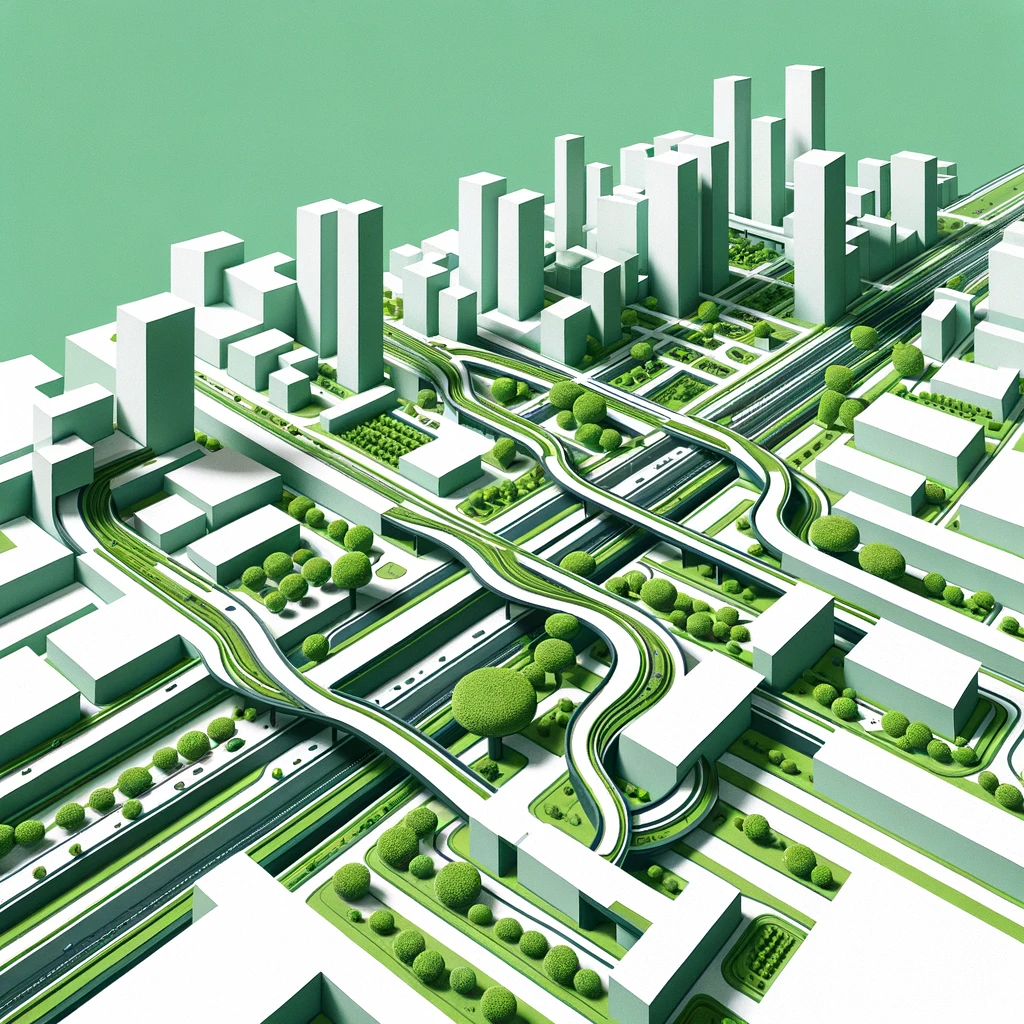Overview
The Urban Greenway project envisions a future where cities are interlaced with extensive green corridors that serve multiple purposes: enhancing biodiversity, reducing urban heat islands, and providing residents with accessible green spaces for recreation and mental well-being. These greenways are designed to connect disparate parts of the city, integrating seamlessly into existing urban infrastructure and unused spaces such as rooftops, abandoned railways, and underutilized parcels of land.
Objectives
- Biodiversity Enhancement: Create habitats for urban wildlife, supporting ecosystems that have been fragmented or diminished by urban development.
- Climate Adaptation: Utilize vegetation to reduce ambient temperatures in urban areas, contributing to climate change mitigation efforts and improving air quality.
- Mental and Physical Health: Offer accessible spaces for physical activity, relaxation, and community gardening, thereby improving the overall well-being of city dwellers.
- Sustainable Transportation: Incorporate cycling and pedestrian paths to encourage non-motorized forms of transportation, reducing reliance on fossil fuels and lowering carbon emissions.
Implementation Phases
- Research and Planning: Collaborate with urban planners, ecologists, and community organizations to identify optimal locations for greenways, ensuring they meet ecological, social, and infrastructural criteria.
- Design and Development: Employ a minimalist design ethos, focusing on native plant species and sustainable materials, to create spaces that are both functional and aesthetically pleasing.
- Community Engagement: Involve local communities in the design process, ensuring the greenways meet their needs and preferences, and foster a sense of ownership and responsibility for their maintenance and success.
- Monitoring and Adaptation: Establish a framework for ongoing monitoring of the greenways’ ecological and social impacts, allowing for iterative improvements and adaptations over time.
Expected Outcomes
- Increased urban green cover, contributing to biodiversity conservation and enhanced ecosystem services.
- Improved public health outcomes due to increased opportunities for outdoor activities and reduced pollution levels.
- Stronger community ties, with shared green spaces serving as focal points for social interaction and collaboration.
- A model for sustainable urban development that can be adapted and replicated in cities worldwide, demonstrating the potential for harmonious coexistence between urban environments and natural ecosystems.

